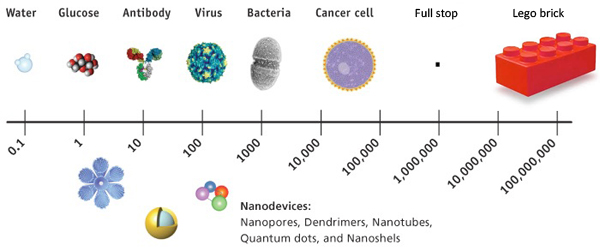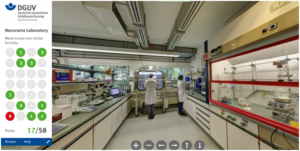Time Warner Cable (TWC) has partnered with Omni Nano to deliver nanotechnology education workshops to children, ages 11 to 17. From an Aug. 4, 2015 news item on Azonano,
Omni Nano is honored to announce a partnership with Time Warner Cable’s (TWC) Connect a Million Minds initiative to educate our youth about nanotechnology and opportunities in STEM (science, technology, engineering, and math) careers.
This program will deliver a nanotechnology workshop to twenty Boys & Girls Clubs in Los Angeles County, reaching about 500 kids from ages 11-17 (grades 7-12) and from diverse ethnic and socioeconomic backgrounds.
Nanotechnology is a highly interdisciplinary STEM field. Growing rapidly, nanotechnology has been forecasted to become a trillion dollar industry and provide 6 million jobs by 2020.
An Aug. 3, 2015 Omni Nano news release on MarketWired, which originated the news item, provides a few more details about the workshop, which has been presented previously,
“Nanotechnology will make a serious impact on our world. Omni Nano teaches students about ‘life-changing’ applications of nanotechnology — including personalized medicine, new cancer treatments, clean and sustainable energy, widely-accessible clean water, and high-tech electronics,” said Dr. Marco Curreli, Founder and Executive Director of Omni Nano. “Our goal is to inspire students to continue learning STEM in order to become the next generation of scientists and engineers that America needs.”
The workshop program provides a 60 minute, multimedia presentation with hands on activities introducing nanotechnology to the participants. These workshops focus on the practical applications of nanotechnology, engaging students by explaining cutting-edge technologies using basic science concepts. By teaching youth about new products, developments, and discoveries, they learn the science and engineering behind innovation.
Since its start in 2013, Omni Nano’s Discover Nanotechnology program has offered over 70 workshops, inspiring over 2,200 students, at public and private schools, after-school programs, and youth conferences.
The Los Angeles County Alliance for Boys and Girls Clubs has already provided several Clubs with this program with outstanding success and will be assisting with coordinating and scheduling these workshops for the feature. Support from TWC for the STEM nanotechnology program will run until the end of February 2016.
Dr. Curreli commented, “Support from technology companies like Time Warner Cable is critical to disseminate and explain the science behind modern technologies to our youth, and put them on a path to pursue STEM careers. This is certainly an important investment TWC is putting into our local youth.”
There is some additional information in the news release about the the partners in this initiative,
About Omni Nano:
Omni Nano creates educational resources and programs to teach nanotechnology at the high school level and inspire today’s youth to become the scientists and engineers of tomorrow. Omni Nano believes that introducing nanotechnology to students while they are still enrolled in their secondary studies will better prepare them for their professional careers in the globalized, high-tech economy of the 21st Century. Omni Nano provides nanotechnology workshops to public and private schools, after-school programs, and youth conferences through their Discover Nanotechnology program. Discover Nanotechnology workshops expose students to modern uses of STEM/nanotechnology, showing them the innovative, exciting, creative, and explorative side of STEM that can make real and significant impacts on our world. To learn more about Omni Nano and their nanotechnology educational resources, visit www.omninano.org.
About Time Warner Cable:
Time Warner Cable Inc. TWC, +0.98% [link removed] is among the largest providers of video, high-speed data, and voice services in the United States, connecting 15 million customers to entertainment, information and each other. Time Warner Cable Business Class offers data, video, and voice services to businesses of all sizes, cell tower backhaul services to wireless carriers and enterprise-class, cloud-enabled hosting, managed applications and services. Time Warner Cable Media, the advertising sales arm of Time Warner Cable, offers national, regional and local companies innovative advertising solutions. More information about the services of Time Warner Cable is available at www.twc.com, www.twcbc.com and www.twcmedia.com.
About Connect a Million Minds:
Time Warner Cable’s (TWC) Connect a Million Minds (CAMM) is a five-year, $100 million cash and in-kind philanthropic initiative to address America’s declining proficiency in science, technology and math (STEM), which puts our children at risk of not competing successfully in a global economy. Using its media assets, TWC creates awareness of the issue and inspires students to develop the STEM skills they need to become the problem solvers of tomorrow. TWC’s national CAMM partners are CSAS (Coalition for Science After School) and FIRST (For Inspiration and Recognition of Science and Technology). Local TWC markets are activating CAMM across the country with community-specific programs and partnerships. To learn more about Connect a Million Minds, visit www.connectamillionminds.com.
About Los Angeles County Alliance for Boys and Girls Clubs:
The Los Angeles County Alliance for Boys & Girls Clubs is made up of 27 Boys & Girls Club organizations serving over 140,000 youth ages 6-18 throughout Los Angeles County. Boys and Girls Clubs provide youth development programs during critical non-school hours. Los Angeles County Alliance for Boys & Girls Clubs is a unified and collaborative force representing all 27 Clubs with the purpose of securing resources, marketing, and financial support to further the efforts of individual Clubs and increase the impact and reach in their communities. More information about the Los Angeles County Alliance for Boys & Girls Clubs is available at http://greatfuturesla.org/.
While I’m intrigued by a news release concerning an educational initiative that includes a link to a webpage tracking the corporate partner’s (TWC) stock price, I see no need to include the link here.

